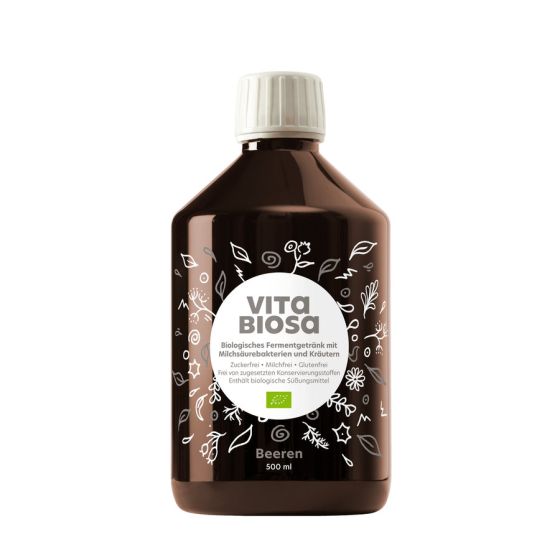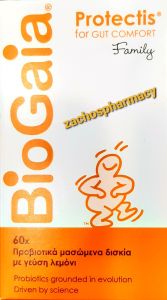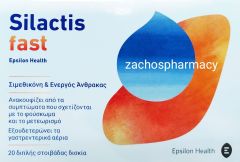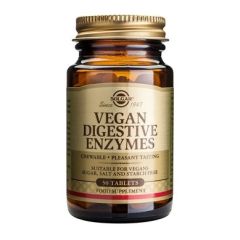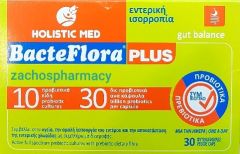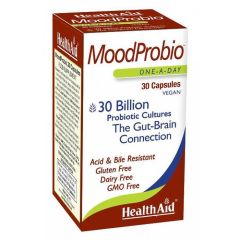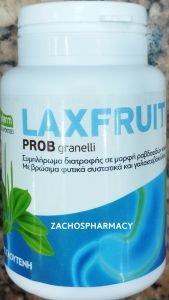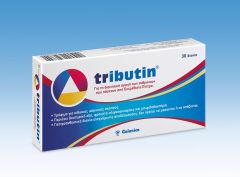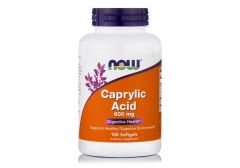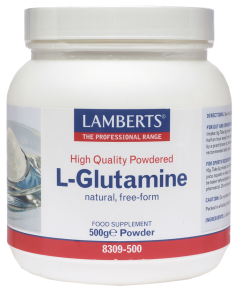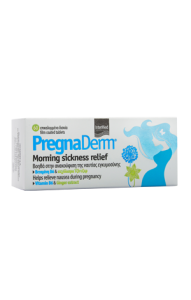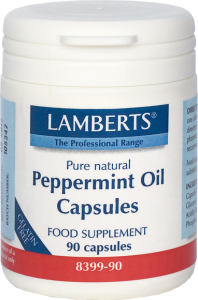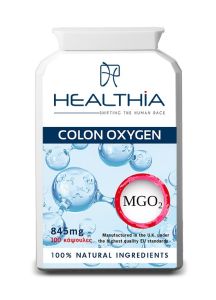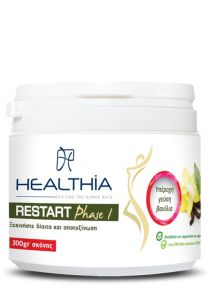Allcura Vita Biosa Aronia Probiotics 500ml/1000ml - Προβιοτικά Στελέχη Σε Υγρή Μορφή
Creation of the intestinal flora
The fetus in the uterus, into the amniotic sac, even in the gut, is completely sterile from any mikroovio. Contact with microbes starts once breaks the amniotic sac, and begins the process of normal delivery (i.e. delivery via the vagina, not by Caesarean section). During childbirth, which takes a few hours, the embryo comes first into contact with germs having in his mother bay and creates its own intestinal flora.
A healthy intestinal flora has no fungi. It must have:
• few Enterococcus
• few Escherichia coli
• plenty of Lactobacillus acidophilus
• and many Bifidobacterien
This flora is ideal for the health of the newborn and it should strive to have each responsible expectant mother. The infant until it normal milk of his mother, which is the fourth day of his birth, should not drink anything other than colostrum! This is extremely important for the immune system of the infant, because these three days, will develop the friendly bacteria that got from the mother's vagina, and will prevent the establishment of pathogenic bacteria. Within these three days will be rapid development of the intestinal flora. First developed largely aerobic microbes. Favored because there is plenty of oxygen. These are the Enterococcus and Escherichia coli. They will consume enough oxygen and then will begin to grow microaerophilic bacteria, such as Lactobacillus. These are favored by lower oxygen concentration. They will grow until they consume all the oxygen, and then start to rapidly grow anaerobes which are favored by the absence of oxygen. These are the Bacteroides and Bifidobacterien. Then they will begin to subside aerobic. Anaerobes will dominate and will become more numerous inhabitants of the intestine.
In the second week from the birth of the child, the intestinal flora has been established, which consists of several hundred trillions of microbes. In the coming months after birth matures and stabilizes intestinal flora. Breastfeeding helps extremely to the consolidation of a healthy and thriving flora. Breast milk contains enzymes, antibodies, germicidal agents that inhibit the growth of hostile microbes, leaving the field open to the development of friendly bacteria.
Breastfeeding, as process causes abundant secretion of saliva, digestive juices, gastric, pancreatic, bile and intestinal fluid. These secretions assure complete and rapid digestion of breast milk, which favors the development of the child on the one hand and on the other hand inhibits the growth of pathogenic bacteria, which feed and multiply by undigested foods. Conversely friendly microbes cooperate intestine, support and aid digestion.
Alongside the intestinal flora, developed and floras entire digestive system. Vagina, urethra, etc. of skin The gut is home to a total of about 1,000,000,000,000,000 germs! Let us bear in mind that our body is composed of about 60 trillion cells. The number of microbes is greater than the number of our cells.
What benefit the good bacteria
1. create in the gut a protective layer against the hostile germs
2. Compete enemy in food and bring starvation.
3. Produce microbicidal substances which deplete the hostile bacteria.
4. irritate the intestinal mucosa continuously, so the adult constantly reborn and the fetus develop.
5. Maintain a constant vigilance and machimotita defense system.
6. Produce footage fatty acids which contribute 40% to the feed of the gut epithelial cells.
7. positively affect bowel movement, preventing both constipation and the diarrhea.
8. Produce various vitamins such as B1, B2, B6, B12, Folic acid, Biotin, Niacin, Pantothenic acid and Vitamin K.
The friendly bacteria called "PROBIOTICS" which means "bacteria FAVOUR OF LIFE." Without them we could not stay alive for very long!
The characteristics of friendly bacteria
The friendly bacteria classified according to the relationship they have with oxygen, aerobic and anaerobic. Also classified according to their behavior in feed at:
• saccharolytic is you consume sugars and carbohydrates.
• Proteolytic are what consume proteins.
• lipolytic are what consume fats.
Consider the kinds of microbes separately.
a) Escherichia coli: also named Escherichia coli (E.coli). It is aerobic and saccharolytic germs. Produce antibacterial substances for hostile germs (Colicin and Mikrozine). It has been shown to have antagonistic activity to dangerous pathogens, salmonella and Siegel. They also have antigens such as lipopolysaccharide LPS and Enterobacterian Common Antigen EcA which irritate produced locally cells of the immune system and thus maintain machimotita.
b) Enterococcus: aerobic and saccharolytic germs. Produce hydrogen peroxide and other antibacterial substances. By destroying these hostile bacteria. Also produce fatty acids, which nourish the intestinal cells and keep the PH bowel slightly acidic. This prevents the development of all enemy bacteria need alkaline PH.
c) Lactobacillus: is air-minded, saccharolytic and mainly consume carbohydrates. That fiber from fruits, vegetables and cereals, where the human digestive system can not break. Lactobacilli cleave these fibers and produce lactic acid. This creates an acidic environment in the intestine and prevent the development of hostile, pathogenic microbes. Also produce more than 100 antibacterial and antimicrobial substances that kill or block the hostile germs. Also produce special substances which block the production of carcinogenic substances from hostile germs. Lactobacilli are present in large numbers in the vagina, mouth and act beneficial, shielding the individual from pathogens.
d) Bacteroides: eat non-digestible carbohydrates (cellulose) and more proteins. They are highly protective shield, which prevents the installation of enemy microbes. But sometimes transformed into pathogens. This occurs after the use of antibiotics when present in the intestine undigested many foods. Then produce harmful substances to humans.
e) Bifidobacterien: indigestible consume hydrocarbons and produce fatty acids (acetic acid, lactic acid, etc.) prevent installation hostile alkalophilic bacteria (such as the proreus) and are located in the vagina and mouth.
When the intestinal flora is healthy treatable diseases such as asthma, neurodermatitis, arthralgias, some food intolerances, vaginal fungal infections etc.
What factors enhance the healthy intestinal flora and which destroy
• A prerequisite to properly digest food, enzymes (REGULAT), good chewing and tranquility.
• Regular use of active living probiotic in selected herbs VITA BIOSA.
• Normal birth.
• Breastfeeding
• The properly digested meal. The friendly bacteria live partly from proper digestion products. Enemy unlike undigested food and non-absorbed liquid.
• The consumption of plant foods enhances friendly. The consumption of animal food strengthens the enemy. As well the overeating in general.
• The largest and direct detrimental effect on the intestinal flora have antibiotics.
These are a few days to completely destroy the intestinal flora and consequently the defense. This occurs even when the antibiotic is directed against a single species of bacteria. Instead enemy microbes will grow uncontrollably.
| Manufacturer | Allcura |
|---|---|
| Pieces | 1 |
| Content (ml) | 500/1000 |
| available in 1-3 working days | No |

